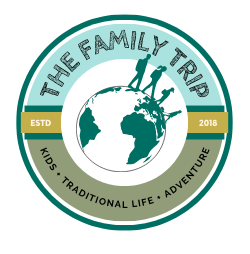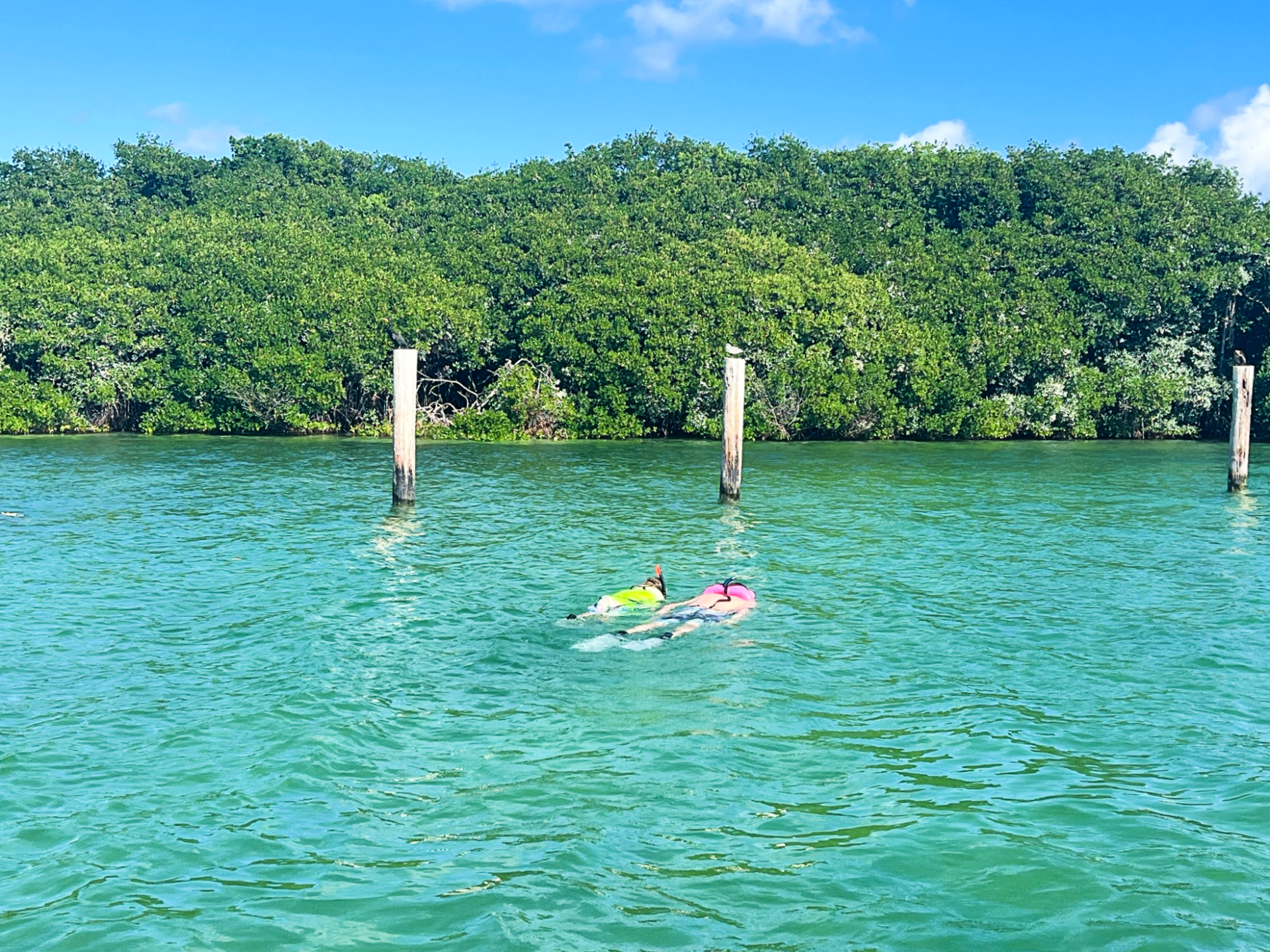
Florida has never really captured my heart, at least not compared to the way it seems to have a love affair with many other people. Maybe because we are “Non-Disney people.” Or maybe it is because of our time living at the beach (the beach lifestyle has lost its mystery). We loved our time at Florida’s Everglades National Park, have visited Key West, roamed South Beach, visited Kennedy Space Center, took the train down the East Coast to Tampa, and I found plenty of things to keep me busy in Southwest Florida. But no matter how much time I spend in Florida, it generally isn’t the place I daydream about when planning trips.
So it was a surprise when we were looking for a quick getaway this past winter that we ended up in the Sunshine State. Tickets to Miami were a super-cheap $99 roundtrip direct out of Richmond. And so, we did it. We love budget travel and getting a deal, we wanted sun and water, and we decided to use the opportunity to see a new (to us) National Park! Here is what we learned during our visit to Biscayne National Park – what is a must do, how to explore this unique park, and some of the challenges.
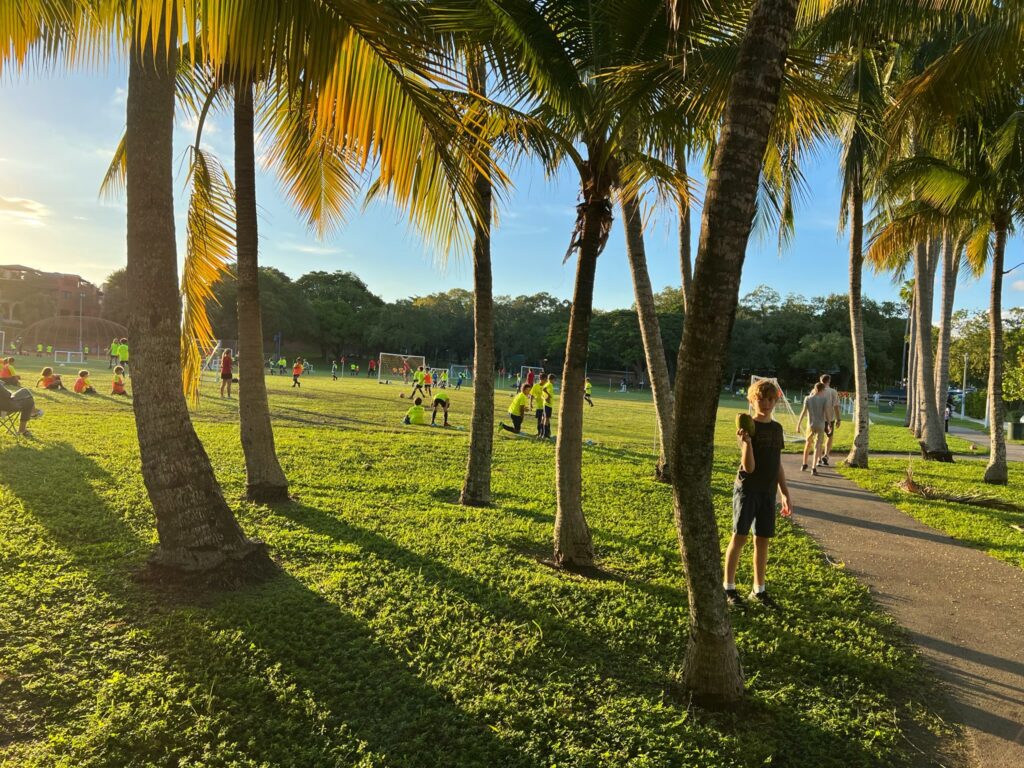
We rented a car (which was a must) and used AirBnB to find lodging.
Staying in Coconut Grove
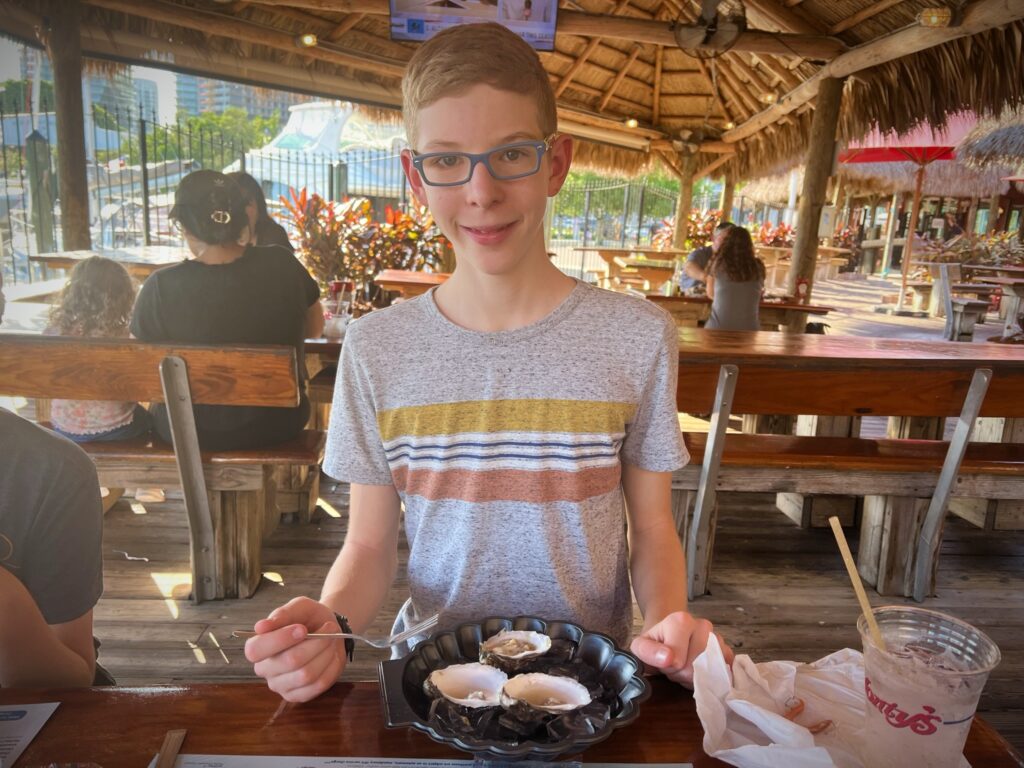
After much back and forth, we eventually elected to stay in Coconut Grove. This allowed us to be partially in Miami yet not too far from Biscayne National Park. Of course, it also meant we weren’t incredibly close to either.
But we knew we didn’t want to stay in Homestead. We wanted something with a lot of life that felt more “Miami.” We also found the pricetag and style of lodging we wanted for our nights near Biscayne in Coconut Grove.
We loved Coconut Grove. This town is situated on the water, with nice breezes and some nicer views. It actually hugs Biscayne Bay itself. Coconut Grove is the oldest neighborhood in Miami, being continuously inhabited since 1919.

The downtown area is full of cute shops and restaurants – with an artistic flair. It feels like a place where people actually live, with youth soccer practices being held and dog walkers out. It was an area that was easily walkable, safe, and full of good treats. Of course, Coconut Grove commands a hefty pricetag to live there, but for us, we were pleased with our two-night stay. It was a great balance between what felt like a Miami experience and being family-forward.
Visiting Biscayne National Park
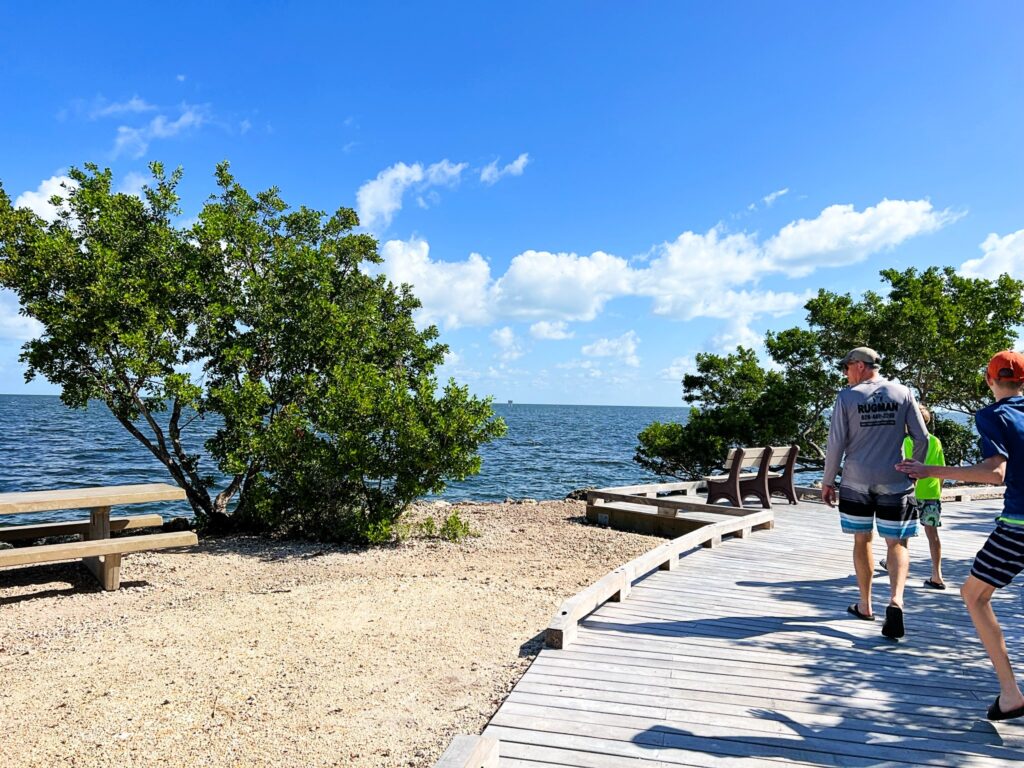
Visiting Biscayne National Park is tricky. This park is, after all, a BAY, which means it is 95% water. There is also only one licensed and authorized outfitter (the Biscayne National Park Institute) to take park-goers on adventures.
We experienced this both at Alcatraz and at the Everglades. But we didn’t have nearly as much hemming and hawing over booking those as we did this.
The prices to do any excursion at Biscayne National Park are high, particularly for a family of four. This meant we had to determine what we really wanted to pay for and what we could let go.
First, even though the Institute would pick up in Coconut Grove for one of their excursions, it was a far greater price tag and eliminated it as an option for us.
Second, we really wanted to paddleboard or kayak AND snorkel. But we could only afford one adventure given the price. (We chose snorkeling.)
We felt like we missed out on really experiencing this park because of the steep prices.
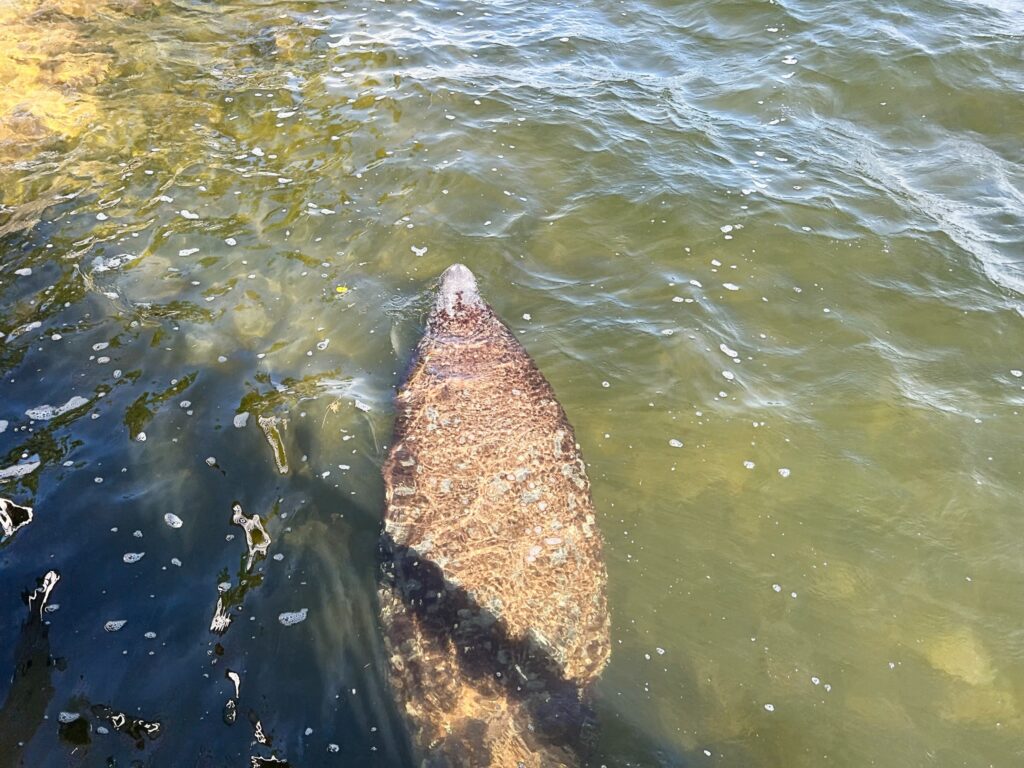
Off of the main Visitors Center, there is a short boardwalk, a tiny beach, fishing piers, and some boats docked. There are gorgeous views, educational exhibits, and people hauling small sailboats and kiteboards around. But the beauty of the park is getting out on the water to enjoy the marine life. That was much harder to do
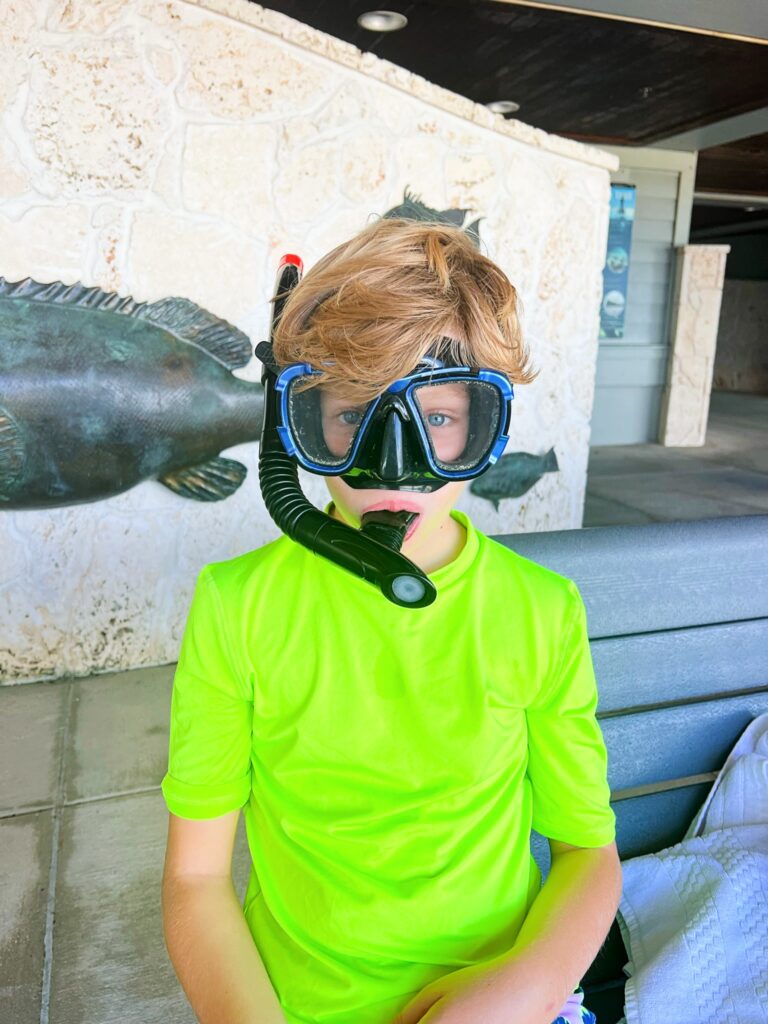
So how expensive is expensive? At the time of our travels to Biscayne National Park, it was a minimum of $109 per person for a 5-hour snorkel tour. While not seemingly terrible, that is over $400 for a family of four for two 30-minute snorkels (the rest of the time is flying through the water at top speeds in a large boat). The guides did talk about the park a few times when the boat was stopped or in a no-wake zone.
Another thing that gave us pause: while we had to pay in advance for the boat tour, and the cancellation policy was not friendly, we were only guaranteed one stop, not two, depending on the weather. We also had no say in which stop or where.
Additionally, many of the excursions had age limits on them, which we did not qualify for. We actually laughed about this as our 10-year-old was a far more experienced outdoorsman and snorkeler than basically anyone else on our boat outside of the guides. But that’s how it is.
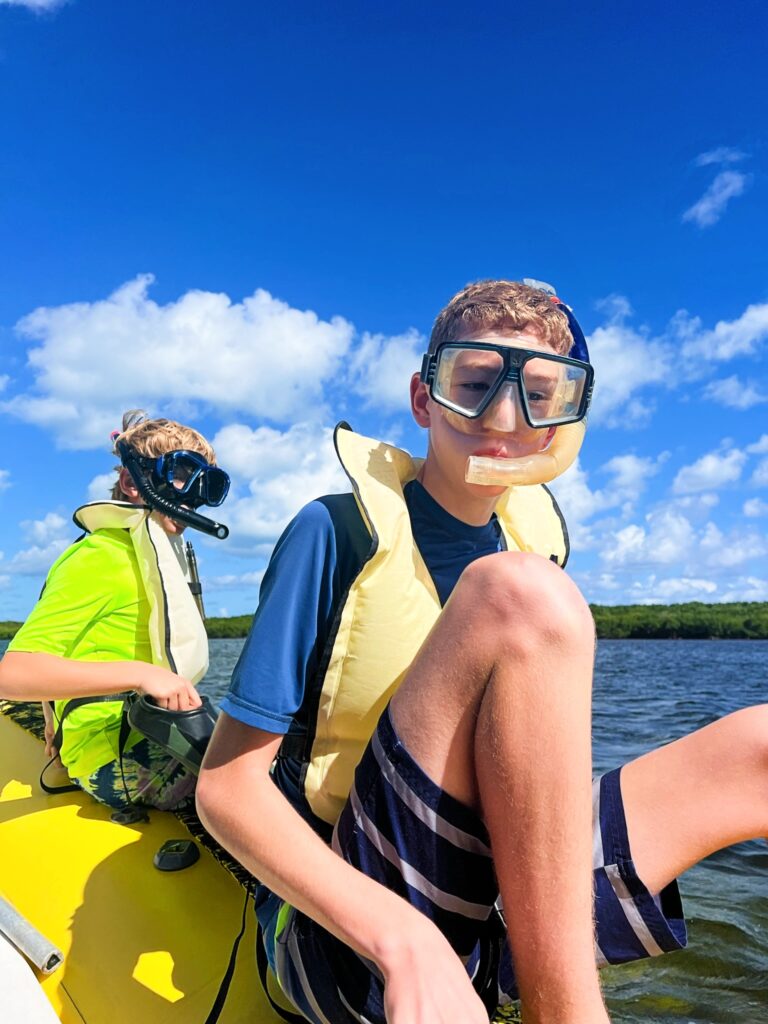
Obviously, in a situation like this, what we were paying for was the expertise of the guides and the gear. So, ultimately, $400 is likely not expensive for what we got. But still, it’s a lot of money no matter how you justify it.
And it was frustrating to see how few options there actually were. We chose the cheapest snorkeling experience on the menu.
Which begs the question: is this a national park only for the “haves?” Is this a place that can only be enjoyed by those with enough disposable income and a household budget margin that allows for hundreds of dollars to truly enjoy it? If one doesn’t have that kind of spending capability, are the treasures of this National Park just not accessible?
Where are the rent-by-hour kayaks? Where are the paddleboards to check out? Why can we not rent snorkel gear for half the price and wade into the waters?
One of the most beautiful things, to me, about the experiment that is our National Parks program is how it makes nature’s phenomenally diverse art museum open to everyone – anyone from any walk of life who has a desire can see the redwoods, the sand dunes, the waterfalls. Biscayne is not the same.
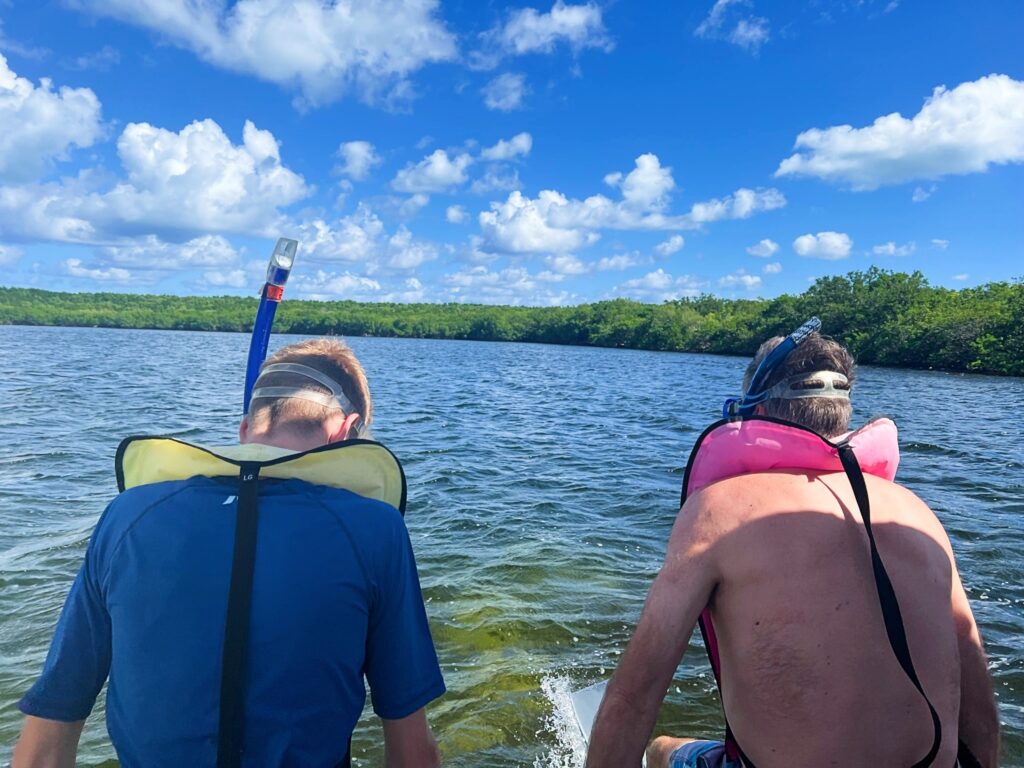
That is, of course, because Biscayne National Park leans more heavily toward the other goal of the National Parks system: to preserve and protect.
Biscayne Bay has been under the steady, evil, beady eyes of the Development Monster for decades. Miami has wanted the waters for years. Not to boat in or swing water skiers around in, but to fill and build on.
Years ago, wealthy Miami residents found ways to claim private islands as their own retreats. Stiltsville, a collection of old, dilapidated buildings built up on sticks (or stilts) is a reminder of the more renegade and lawless history of the Bay. In the 1960s, multiple proposals were submitted to make this area into a second Miami Beach-esque destination. Fossil-fueled and nuclear power plants were built on its shores (where they immediately failed to cool the wastewater they dumped back into the Bay and killed off native seagrasses). It became a battle to protect Biscayne Bay.
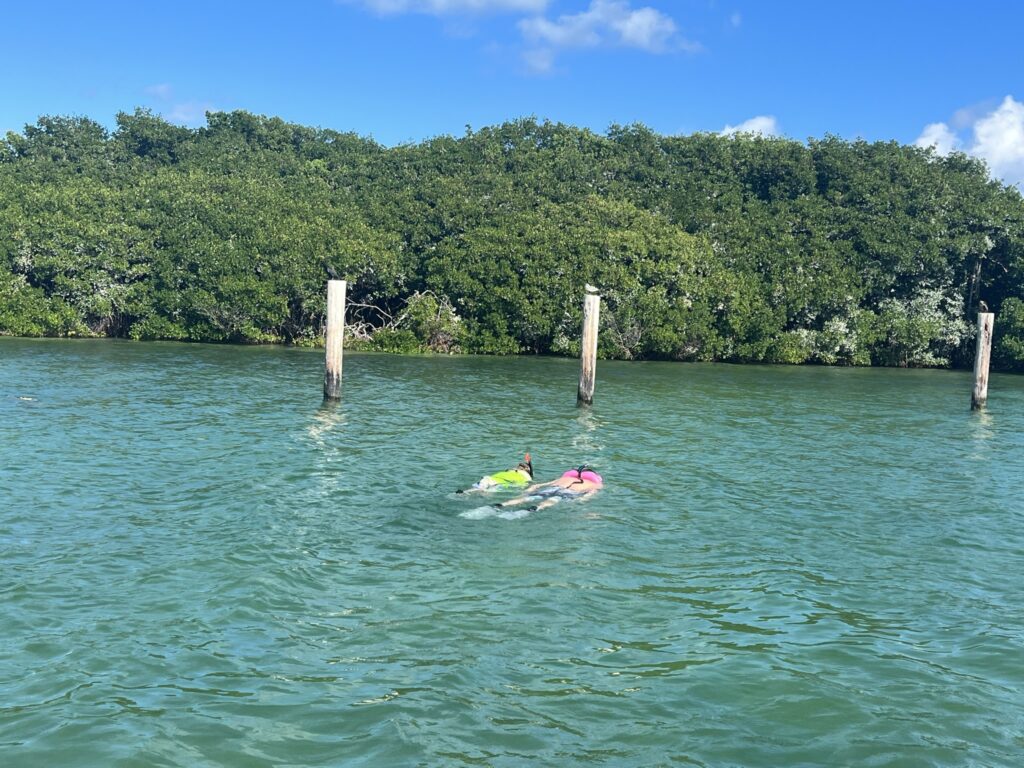
In 1968 President Eisenhower put a stop to all the dreams of capitalist takeovers by designating the area a National Monument. This saved it from development, but private interests (hoping to build highways, bridges, and resorts) still owned some of the land. In 1974 Congress signed an act making it a National Park. Folks saw the writing on the wall then and started to sell their land to the National Parks Service (reportedly at about one-third of the development value they would have received if they had been allowed to follow through with the “Islandia” they had planned).
And the 1960s weren’t long ago. The battle for Biscayne Bay is still real and raw. Our guide, a Miami native, spoke with bitterness about downtown Miami, speaking of its avarice and greed, of its lack of humanity and grace. The anger and the fight still feel real and present.
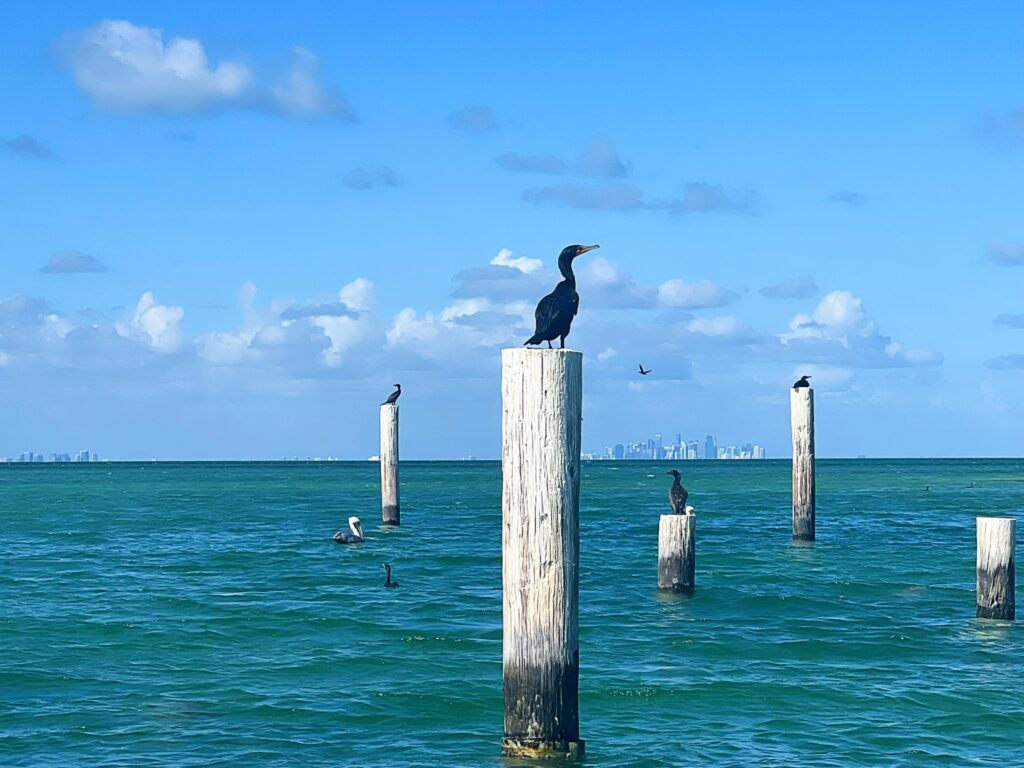
So perhaps Biscayne National Park isn’t particularly worried about allowing human beings to enjoy it. Maybe this isn’t the park where the National Park Service is particularly keen on the general public’s enjoyment and education. After all, the general public also tried to destroy it just over 55 years ago. That’s not even as long as today’s average lifespan of human beings.
Biscayne National Park Institute, the only one that provides excursions in the park, is about research and preservation. They aren’t looking to turn a profit and they don’t particularly care about how many people splash in the waters every day.
They give money to stewardship and discovery; they run Keep Biscayne Beautiful Campaigns. They are part of a nonprofit system that has given over $4 million to Florida’s southern national parks – only to have people like me complain that I don’t get to have the experience I want.
While families like mine are welcome to snorkel among schools of fish with the Miami skyline watching ominously in the distance, they are more worried at Biscayne National Park about making sure there are still fish (maybe even MORE fish) for my kids’ kids.
Maybe that’s not a terrible thing.
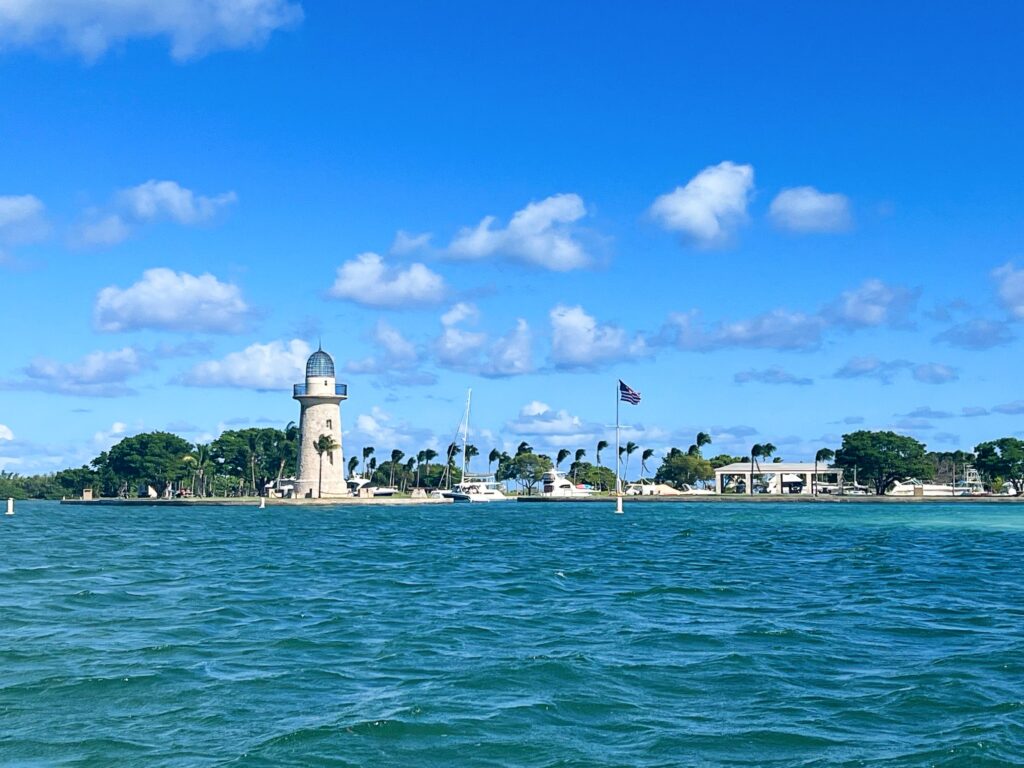
After taking the Bay in, full of sunlight and seawater, the boat hauled us back to shore as the sun was starting to dim.
We were ready for some food (ack, we were craving a seafood dinner – are we part of the problem!?). We asked around and found our way to Black Point Ocean Grill.
Ducks begged for our food, the margaritas were salty, we sat in a breeze and watched the sun set over gigantic white yachts.
Reflecting over dinner, I found myself grateful that the NPS is doing the hard work of preserving that which we tend to want to own and manipulate. Ultimately, the Park Service seems to be clear on its mission:
Since 1916, the National Park Service has been entrusted with the care of our national parks. With the help of volunteers and partners, we safeguard these special places and share their stories with more than 318 million visitors every year. But our work doesn't stop there.
We are proud that tribes, local governments, nonprofit organizations, businesses, and individual citizens ask for our help in revitalizing their communities, preserving local history, celebrating local heritage, and creating close-to-home opportunities for kids and families to get outside, be active, and have fun.
Taking care of the national parks and helping Americans take care of their communities is a job we love, and we need—and welcome—your help and support.NPS.org
Nowhere in there does it say that I should have the right to snorkel with my family for less than $400. I suppose the fact that we are able to pay is our way of offering our help and support.
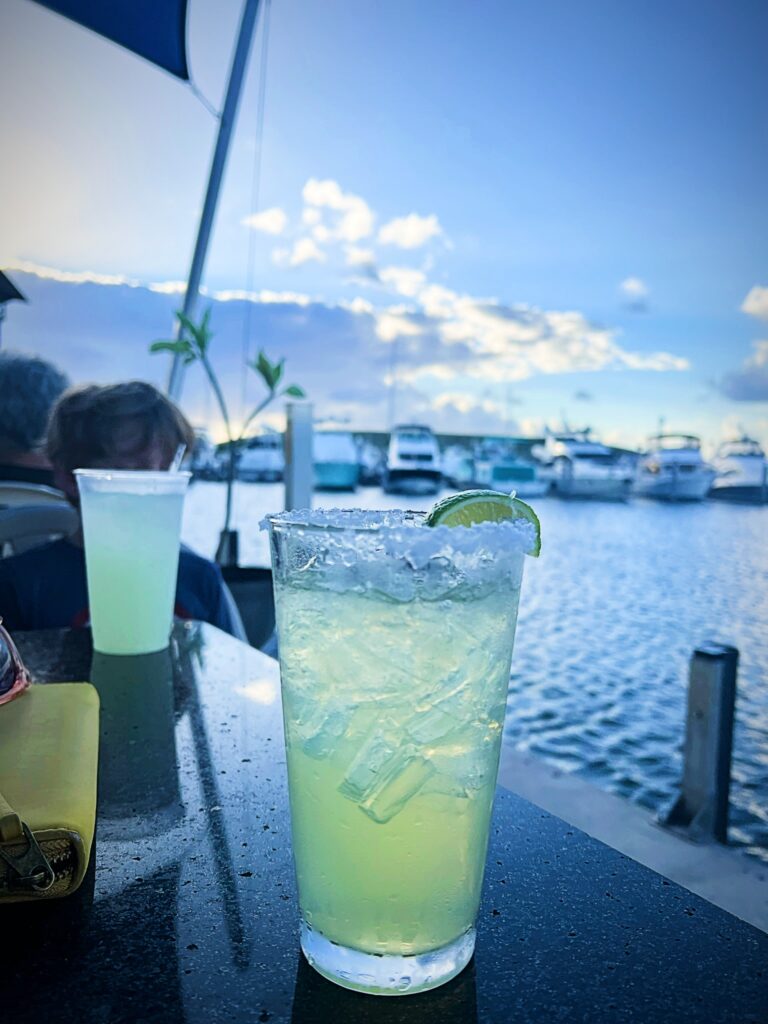
Things to Know about Visiting Biscayne National Park
- If you plan to go on the snorkel excursion, or even on a boat at all, bring both reef-safe sunscreen as well as warm clothes. Those boats move fast, the sun sets quickly, and it can get surprisingly cool!
- Bring a snack and a water bottle. We brought our own picnic lunch and sat near the beach area at a big picnic table.
- Homestead is the closest city to the official Visitors Center.
- Use the National Parks website www.nps.gov/bisc to plan your trip.
- Book adventures and excursions at: www.biscaynenationalparkinstitute.org.
- Definitely try to get underwater if you can. The snorkeling was incredibly easy and, while we have snorkeled some pretty amazing places like Grand Cayman and the Great Barrier Reef, this was a fun, easy, and successful snorkel for us.
- If you want to get the best underwater adventure, go on the first boat out, not the afternoon. In the afternoon, boats start churning up the water and visibility goes down.
